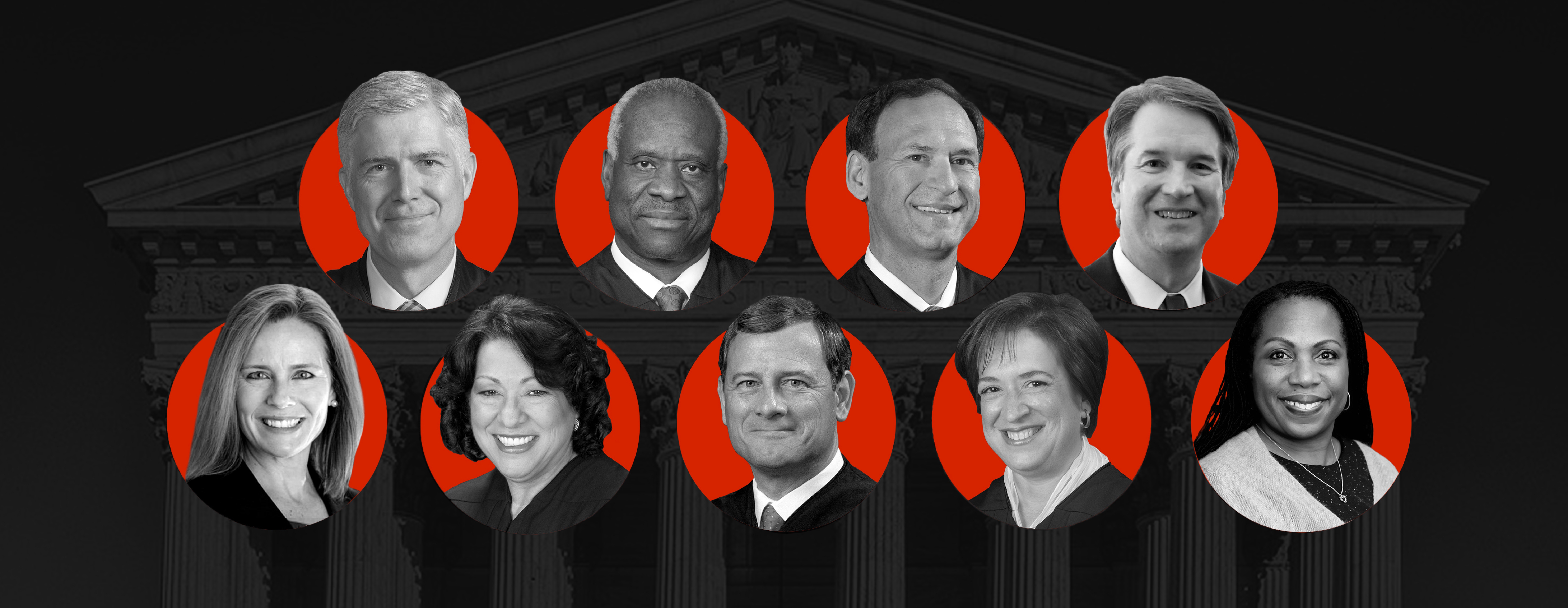Realistic and Unrealistic Options for Structural Court Reform

Sixty percent or two-thirds or three-fourths of the country, depending on the poll, wants to end life tenure at the Supreme Court.
Whatever the exact number, it’s a durable, sizable majority.
The challenge, so they say, is coming up with a specific proposal that most Americans would support. Below are some we like (we’re partial to no. 1):
1. Term limits via H.R. 5140
How implemented: A new justice is appointed every odd-numbered year. After 18 years of service, post-enactment justices take senior status and don’t hear cases, though they could return to SCOTUS for a short period if there’s an unexpected vacancy.
Important detail: In the years following implementation, there might be more than nine justices hearing cases, since the bill does not push the current nine to senior status.
2. Term limits akin to H.R. 5140 but with forced senior status for the current nine (i.e., H.R. 8500)
How implemented: Same as above.
Important detail: The nine junior-most justices hear cases, meaning, if the law passed this year, Justice Thomas would be moved to senior status in 2023, Roberts in 2025, etc.
3. Term limits akin to H.R. 5140 but with nine-justice panels
How implemented: Same as above.
Important detail: During the years following implementation, in which there might be more than nine justices on the court, justices will review petitions and hear cases in randomly selected nine-judge panels that are switched up every month, meaning litigants bringing petitions would not know which of the nine would be ruling on them.
4. Term limits, with possible expansion via backup law (link)
How implemented: Bill passes, new justice added every other year. Only the nine junior-most justices hear cases. If the law is challenged and SCOTUS says it’s unconstitutional, expansion automatically goes into place via backup law, and the court will have 13 justices.
Important detail: The current justices’ views on term limits is unknown, though we feel confident saying there are three for, two against and four unknowns.
Unrealistic Options for Structural Court Reform
1. Court expansion
How implemented: Legislation adding four justices is enacted.
Important detail: The policy remains unpopular nationwide, and the bill that includes it still, post-Dobbs, has only three Senate cosponsors.
2. 5-5-5 court
How implemented: Five Republican-appointed justices join five Democratic-appointed justices to appoint five non-ideological justices for a 15-member court.
Important detail: Beyond the fact that this idea, among all of them, is the least likely to pass constitutional muster, there are not five non-ideological lawyers in the country who’d pass muster.
3. Every federal appeals court judge is a justice
How implemented: The office of Supreme Court justice is changed to include the judges of the 13 U.S. Courts of Appeals, bringing the total number of justices to 188 (nine on SCOTUS plus 179 authorized circuit court judgeships). The judges would then sit in randomly selected nine-justice panels.
Important detail: If you thought it was difficult to get to 13 justices, wait until you try to get to 188.
4. Constitutional amendment implementing term limits
How implemented: The language of the term limits statute essentially becomes the language of a term limits amendment.
Important detail: This is great in theory, but it’s not a short- or medium-term solution.